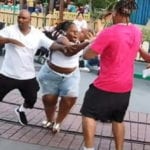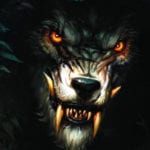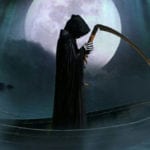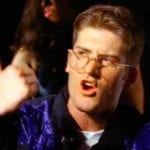 Politics
Politics  Politics
Politics  Weird Stuff
Weird Stuff Ten Bizarre Facts About The Doge Meme
 Our World
Our World 10 Ways Your Christmas Tree Is More Lit Than You Think
 Movies and TV
Movies and TV The 10 Coolest Stars to Set Sail on The Love Boat
 History
History 10 Things You Didn’t Know About the American National Anthem
 Technology
Technology Top 10 Everyday Tech Buzzwords That Hide a Darker Past
 Humans
Humans 10 Everyday Human Behaviors That Are Actually Survival Instincts
 Animals
Animals 10 Animals That Humiliated and Harmed Historical Leaders
 History
History 10 Most Influential Protests in Modern History
 Creepy
Creepy 10 More Representations of Death from Myth, Legend, and Folktale
 Politics
Politics 10 Political Scandals That Sent Crowds Into the Streets
 Weird Stuff
Weird Stuff Ten Bizarre Facts About The Doge Meme
 Our World
Our World 10 Ways Your Christmas Tree Is More Lit Than You Think
Who's Behind Listverse?

Jamie Frater
Head Editor
Jamie founded Listverse due to an insatiable desire to share fascinating, obscure, and bizarre facts. He has been a guest speaker on numerous national radio and television stations and is a five time published author.
More About Us Movies and TV
Movies and TV The 10 Coolest Stars to Set Sail on The Love Boat
 History
History 10 Things You Didn’t Know About the American National Anthem
 Technology
Technology Top 10 Everyday Tech Buzzwords That Hide a Darker Past
 Humans
Humans 10 Everyday Human Behaviors That Are Actually Survival Instincts
 Animals
Animals 10 Animals That Humiliated and Harmed Historical Leaders
 History
History 10 Most Influential Protests in Modern History
 Creepy
Creepy 10 More Representations of Death from Myth, Legend, and Folktale
Top 10 TV Theme Songs from the 1950s
The advent of commercial television in the late 1940s astonished Americans by giving them the ability to watch and listen to events occurring across the continent and around the world. Even though few people could afford the pricey TV sets at that time, they were able to experience the thrill of watching programs by gathering in front of show windows in appliance stores or in taverns with working sets.
Producers originally considered television merely an experimental technology— a “radio with pictures.” But as broadcasting gaps in rural areas were filled, prices dropped, and millions of Americans purchased sets and watched shows, producers changed their minds. People by the millions reserved time in the evening to watch their favorite comedy and variety shows. Television became America’s first nationally shared experience. Young Baby Boomers claimed television as their own, watching icons such as Howdy Doody and Captain Kangaroo. By the end of the 1950s, American television had acquired the kind of cultural power not even the greatest emperors in history could’ve dreamed of.
Producers realized early on, as they did in radio, they needed to use distinctive music as a cue to viewers that a TV show was about to begin. It would never do for viewers to be confused as to when their favorite westerns, comedies, variety shows, sporting events, anthology series, police procedurals, quiz shows, or children’s shows were being aired. Producers borrowed heavily from programming techniques used in radio. Some radio shows transitioned directly to television, complete with their original theme songs. Producers sought to save money by using old classical music found in the public domain or paying composers flat fees for full rights to their music. The result? Some of these tunes became more famous than the shows they were associated with.
Related: 10 Controversial Songs That Left Their Mark On Pop Culture
10 The Lone Ranger (1949–1957)
“Return with us now to those thrilling days of yesteryear….” This is how each radio episode of The Lone Ranger began. Producers didn’t change a word for the TV version of the show. This western featured actor Clayton Moore playing the part of an American version of the classic wandering, gallant knight.
The Lone Ranger traveled the Old West each week, out to right all wrongs, accompanied by his brave and faithful Native American scout, Tonto. Tonto was played by Jay Silverheels, a member of the Mohawk tribe from Ontario’s Six Nations Reservation. So this show can be thought of as the first interracial TV show in history.
Each episode would begin with a rousing rendition of the “William Tell Overture,” an outtake from Gioachino Rossini’s 1829 opera. The Lone Ranger would shout, “Hi-yo, Silver! Away!” His beautiful white horse, Silver, would rear. In radio, this signaled the beginning of a chase scene on horseback. On TV, the viewer knew an adventure was about to begin.
A joke reveals the power of American television to transform the meaning of even the most famous of European cultural imports: “An intellectual is one who can listen to the ‘William Tell Overture’ without thinking of The Lone Ranger.”[1]
9 Mickey Mouse Club (1955–1958)
Walt Disney produced this children’s show the year Disneyland opened in Anaheim, California. It became a huge hit as children watched segments featuring singing and dancing by talented child stars known as the Mouseketeers and outtakes from Disney adventure stories. Annette Funicello, better known for her beach movies in the 1960s, got her start on this show.
The show began with the cartoon antics of Goofy, Donald Duck and his nephews, and Mickey himself during the theme song. The song asked this question: “Who’s the leader of the club that’s made for you and me?” And is answered by spelling out “MICKEY MOUSE.” The show was revived numerous times after its 1950s incarnation.[2]
8 Bonanza (1959–1973)
This NBC western featured the adventures of the Cartwright clan, starring Lorne Greene as father Ben and his grown sons Adam, Hoss, and Little Joe, on the enormous Ponderosa ranch stretching out from Virginia City to Lake Tahoe. The ponderosa pines and the Sierra Nevadas could be seen in living color if your family was wealthy enough to own one of the few color TV sets available at the time.
As an old-time Western map stretches out across the screen, the theme song, a country-western-style instrumental, begins to play. The map burns, opening up a gorgeous vista. The four Cartwrights ride toward the camera. We see each face as their credits are run. “Bonanza,” the theme song, was written by David Rose and performed by Jay Livingston & Ray Evans. Johnny Cash and Johnny Western wrote lyrics for the song. Lorne Green recorded a version of the song with those lyrics.[3]
7 American Bandstand 1952–1989
American Bandstand is by far the longest-lasting show on this list. It was shown on ABC for a total of 37 years and featured thousands of rock tunes enjoyed by generations of teenage viewers. Many became hits due to exposure on Bandstand. Local teenagers were recruited to dance to the music. Each show would feature an interview with one of the rock stars, who would then perform their new hit song. Dick Clark, self-styled as the world’s oldest teenager, produced and hosted the show in Philadelphia.
“High Society,” written by Artie Shaw, was the original theme song when “Bandstand” was a local show. When the show went national, it was replaced by Charles Albertine’s now famous “Bandstand Boogie,” a Big Band era-style instrumental. It was performed by Larry Elgart’s band. Bruce Sussman and Barry Manilow wrote lyrics for the song in the early 1970s, featuring a boy who loves Bandstand and “may even show off his handstand” on the show. From 1977 to 1987, Manilow’s version of the song was used as Bandstand’s new theme song.[4]
6 Peter Gunn (1958–1961)
Peter Gunn was an American detective show produced by Blake Edwards. It starred Craig Stevens as the title character, who operated out of a jazz nightclub. Lola Albright played his girlfriend, who sang at the club. Its theme song is a superb, lush jazz arrangement composed and conducted by Henry Mancini, who would later go on to achieve superstardom with his “Pink Panther” theme song in 1963.
This instrumental has a strong driving beat and a hot tenor sax solo. Peter Gunn was nominated for an Emmy, and the theme song was nominated for two Grammys. The song was covered by many noted jazz and rock performers, including Emerson, Lake & Palmer.[5]
5 Dragnet (1951–1959)
Dragnet was an old police slang term borrowed from fishermen meaning a systematic and coordinated attempt to find a criminal suspect. It was also the name of a radio police procedural that aired from 1949 to 1957. The original TV version of the series aired as the radio show was still running. The TV show was later reprised as Dragnet 1967. It featured the retelling of real police stories from the Los Angeles Police Department’s files with, famously, one exception: “only the names have been changed to protect the innocent.”
Jack Webb, who played Sergeant Joe Friday, narrated the show. His sharp, pointed diction became so recognizable that comedians eagerly mimicked it. Johnny Carson famously created a drop-dead spoof of the show with the help of Webb on The Tonight Show years later. The show featured the drudgery as well as the glamour of police work—paperwork, patrolling, investigations, lab work, and interrogations. Police forces across the nation loved the show for its honest depiction of the life of a cop. LINK 18:
Perhaps there are no more iconic first four notes for any tune—outside of Beethoven—anywhere in music history. Dragnet’s DUM dee DUM DUM alerted anyone within earshot of a radio or TV set that Dragnet was ready to begin. The song continues, then pauses as the announcer intones: “Ladies and gentlemen: The story you are about to hear is true.”
The theme song, called “Danger Ahead,” begins again as the “Dragnet March.” It was composed by Walter Schumann, who derived the song from Miklos Rozsa’s score for The Killers, a hit movie of 1946. The song was recorded by studio musicians.[6]
4 Rawhide (1959–1966)
Rawhide was a classic western featuring a cattle drive. Eric Fleming played the savvy but fair trail boss, Gil Favor. Producer Charles Warren studied the 1866 diary of a real-life trail boss, George C. Duffield, to get the details of Favor’s work just right. Every time the cowboys complained about the chow, Wishbone the cook would get crabby. He was played by Paul Brinegar. The most famous actor who first made a name for himself on the show was Clint Eastwood. He played Rowdy Yates, second in command to Favor, until he took over as trail boss in the final season.
This country-western theme song described life on the trail, simulating the sounds of cowboys yelling out instructions and cracking their whips. Frankie Laine sang, “Cut ’em out, ride ’em in. Ride ’em in, cut ’em out, Rawhide.” Americans learned what “hell bent for leather” meant by watching the show. Dimitri Tiomkin and Ned Washington wrote it. They were chosen because they had written superb music for High Noon. Rawhide became famous again when the Blues Brothers performed it in their movie in 1980.[7]
3 The Twilight Zone (1959–1964)
The Twilight Zone was TV’s iconic anthology series, produced and hosted by Rod Serling, who also wrote 92 episodes for it. It ran on CBS for four seasons. Picture, if you will, a series of morality plays depicting the hard-won lessons of humanity through horror, drama, comedy, and science fiction tales with surprising and shocking endings. Some famous movie stars put in appearances, including Robert Redford, Burgess Meredith, Burt Reynolds, and Roddy McDowell.
The show’s eerie theme is instantly recognizable. It led off with four strangely dissonate notes played repeatedly on an electric guitar. These were followed by guitar notes, bongos, brass, and flutes. This song stood for the unknown. Bernard Herrmann, best known for the hair-raising squeaky violins in Psycho, wrote a song that was never used for The Twilight Zone.
Instead, an employee spliced together two short pieces written and performed by Marius Constant for CBS’s sound library. The composer didn’t know for years that his work was used in this way. He received no royalties, only the original fee. No one was listed in the credits as the composer.[8]
2 I Love Lucy (1951–1957)
Everyone who ponders life in the 1950s remembers I Love Lucy, a classic screwball comedy that aired on CBS for six seasons. It depicted Lucille Ball playing a young stay-at-home wife. Her real-life husband, Latin big band leader Desi Arnez, played himself on the show thinly disguised as “Ricky Ricardo.” Lucy and her next-door neighbor, Ethel Mertz, were always plotting on how to appear in her husband’s nightclub shows.
I Love Lucy featured hilarious scenes of physical comedy, including Lucy and Ethel’s failure to handle an onslaught of chocolates on a conveyor belt or when they stomped on grapes in a vat. “Lucy Goes to the Hospital” became the highest-rated TV episode show at that time, with over 44 million viewers. This meant over 70% of America’s households had tuned in. Everyone eagerly awaited the birth of “Little Ricky.”
The famous I Love Lucy theme song was written by composer Eliot Daniel. He wasn’t listed in the credits because he was under contract to Twentieth Century Fox. The Desilu Studio Orchestra performed the theme song in the Latin Big Band style. Lyrics by Harold Adamson were sung during “Lucy’s Last Birthday” and were never sung again during the run of the show. Members of the real-life Desi Arnaz Orchestra supplied music performed during the nightclub scenes.[9]
1 Perry Mason (1957–1966)
This classic courtroom drama featured Perry Mason, a brilliant Los Angeles defense attorney who is depicted as an even more brilliant detective. The show was adapted from author Erle Stanley Gardner’s murder mysteries. Each story was written to fit neatly into TV’s hour-long format. The first half-hour was devoted to police procedure and Perry’s sleuthing. The second half-hour showcased Perry’s skills in the courtroom. Raymond Burr played Perry as both stern and compassionate. Burr had far too many lines to memorize, so he read them off a Teleprompter. You’d never know it by watching the show. He was able to convincingly portray Perry as the attorney you’d want on your side if you ever got into trouble.
The iconic theme song for Perry Mason was composed by Fred Steiner as a slow, moody, sultry jazz tune and was performed by studio musicians. It was called “Park Avenue Beat.” The theme song is played at the beginning of the show as Perry Mason receives a briefing file from the judge. He carries the file to Paul Drake and Della Street and then to Hamilton Burger and Lieutenant Tragg. We see their credits as the music plays. The song was and is instantly recognizable worldwide. The Blues Brothers spoofed it with humorous lyrics on their Made in America album. Astonishingly, Bernard Herrmann had been asked to “refresh” the theme song. He said no. “What do you want me to write a theme for? Steiner’s is perfectly good.”[10]








